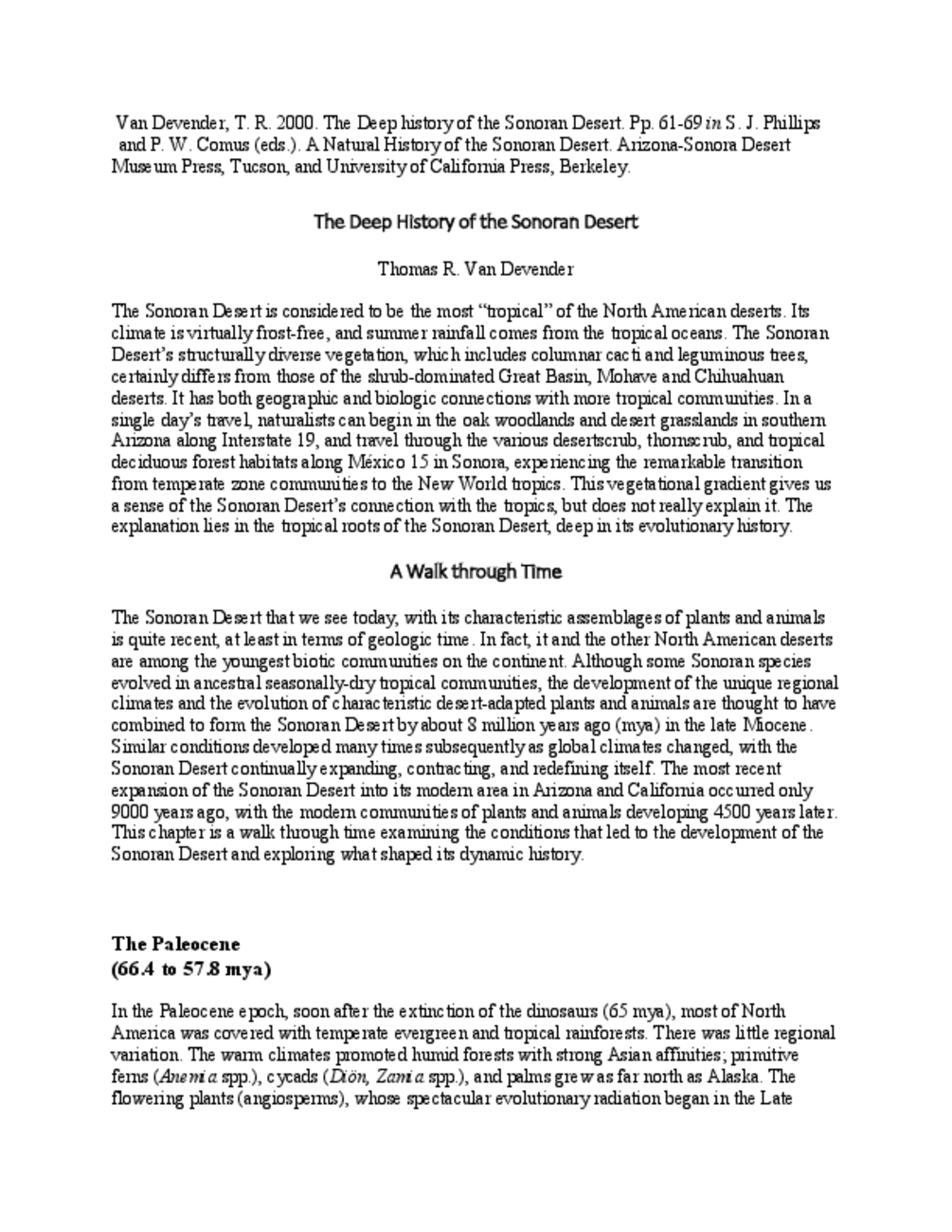The Deep History of the Sonoran Desert
The Sonoran Desert is considered to be the most “tropical” of the North American deserts. Its climate is virtually frost-free, and summer rainfall comes from the tropical oceans. The Sonoran Desert’s structurally diverse vegetation, which includes columnar cacti and leguminous trees, certainly differs from those of the shrub-dominated Great Basin, Mohave and Chihuahuan deserts. It has both geographic and biologic connections with more tropical communities. In a single day’s travel, naturalists can begin in the oak woodlands and desert grasslands in southern Arizona along Interstate 19, and travel through the various desertscrub, thornscrub, and tropical deciduous forest habitats along México 15 in Sonora, experiencing the remarkable transition from temperate zone communities to the New World tropics. This vegetational gradient gives us a sense of the Sonoran Desert’s connection with the tropics, but does not really explain it. The explanation lies in the tropical roots of the Sonoran Desert, deep in its evolutionary history.

